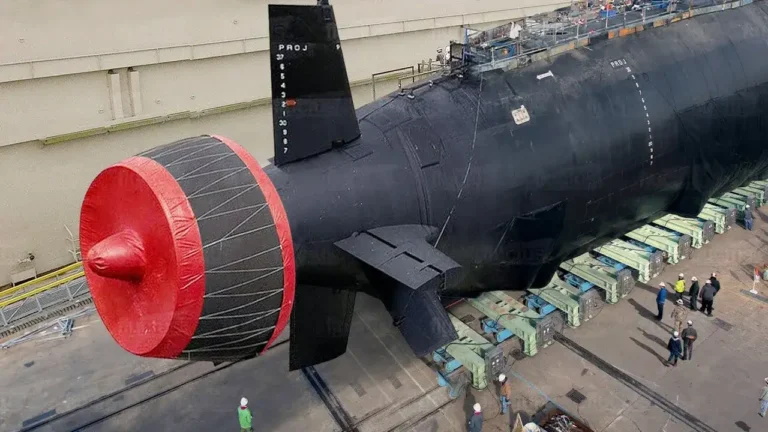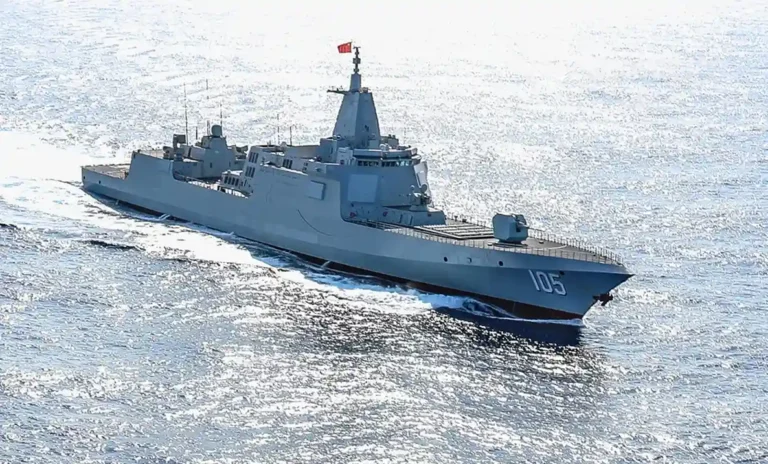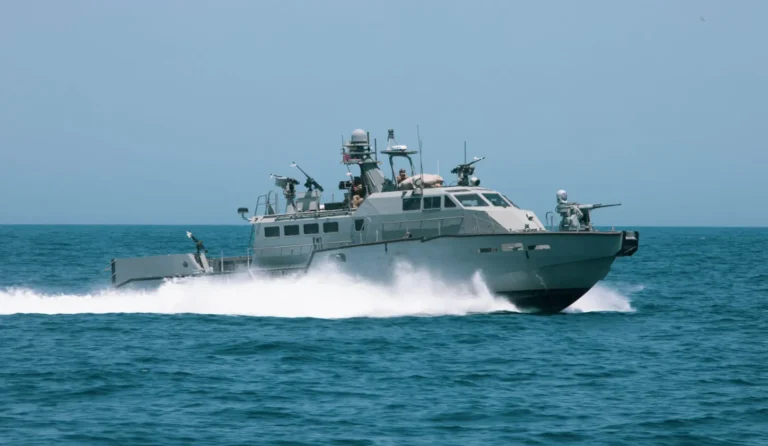Follow Us:
Share
Table of Contents:
Defense Feeds – The United States dominates the seas with its gigantic nuclear-powered aircraft carriers and sluggish amphibious assault ships, but Russia’s Kirov Class Battle Cruiser is the largest and the most heavily armed surface combatant.
Of these behemoths there is one currently in service. They are huge, weighing in at 25 thousand tons, on account of being designed with 20 tubes for massive P-700 anti-ship missiles as well as a bristling variety of smaller missiles and a massive 130mm AK-130 gun, prompting some in Western fleets to mock it as a “floating weapons warehouse.”

Other vessels, such as Russia’s latest Corvette Steregushchiy class carrying 16 air defence long-range-missiles, eight torpedoes, three close-in weapon systems and a hundred millimetre gun.
On the other hand, the U.S that is a much larger ship, carrying a much smaller 57 millimetre gun, no long range or even medium range defences, only the very short range spinning airframe missile, no tomahawks, but perhaps a significantly shorter range naval strike missile, and no torpedoes.
The question arise, why does Russia tends to pack so many armaments to its warships than the United States? In today’s article, we are trying to discuss the above question and if you want to get more details, see the discussion below!
There actually many answers to that question and we’ll try to take a look one by one. As we know that the U.S navy is considerably more offensive force in Russia, where the U.S fleets constantly operate near the coasts of China, Russia, Europe the Middle East.
While Russia’s surface fleet is more defensive mainly operating near their own coast or near their own naval bases in other countries like Syria. It is possible that the large numbers of anti-ship missiles carried are aimed at trying to stop U.S aircraft carriers from approaching them in the event of war.
This also explains why Russia is arming small corvettes with land attack and anti-ship calibre cruise missiles, these aren’t designed for, nor do they have the facilities to operate out deep into the open ocean like the larger frigates destroyers and cruisers. Therefore, they’re aimed at attacking enemy ships and land-based threats that are in the nearby area.
Furthermore, as we can see that at a Slava class cruiser for instance consist of a massive 16 missile tubes, and when we have a closer look, there seems to have weapon almost in all side of the ship. In comparison to the vessel owned by U.S, the Ticonderoga-class, there is a smaller missile tubes on the stern and there only two phalanx CIWS available.
This is because most of the weapons are housed in the vertical launch system cells (VLS), which seems to be an efficient way to store the weapons as they are quicker, relied on rails, better protected from the elements inside sealed containers.
Additionally, modern U.S aircraft carriers are designed to carry only the short range point defences such as the phalanx, rolling airframe missile and the slightly longer range sea sparrow missiles.
For example, on the U.S-Arleigh Burke-class destroyer, they’re actually removing armaments from the ship, the newest ones do not even have harpoon anti-ship missiles, and one or both of the ship’s phalanx sea guns have been removed.
The reason is that the U.S is undergoing a shift with the ending of the cold war and the new threat from a growing Chinese navy.

Therefore, they are focusing more on submarine warfare created the need to the construction of a helicopter hangar which required the removal of the harpoon missiles, also new anti-ship missiles are being developed like an anti-ship version of tomahawk and the lRASM both which can fit in the destroyer’s VLS cells making harpoon unnecessary.
Additionally, the phalanx are replaced with sea-ram which uses guided missiles to be more accurate. Other plans involve eventually installing laser guns on board, which can potentially be much more reliable and without being limited by available missiles or bullets.
Another response to the preceding question is safety, maintenance and reliability. As generally known that packing as many weapons as possible into a small ship typically isn’t always a safest option.
It’s also not the simplest way to make some repairments and maintenance of a ship, either because it’s more crowded, or because of the reliability issue. It cannot be denied that every ship has issues and things will break and fail.
Unfortunately, Russia does not spend or have anywhere near the same expenditure for maintenance, overhauling, replacement, and ensuring that all equipment and weaponry function properly.
Share
Defense Feeds
Defense Feeds is publication focusing on informing, engaging, and empowering the world by providing accurate information from defense technology.
Powered by Defense Feeds © 2025 – All rights reserved.




